Tough Times, Stronger Companies

The challenges of the past year have tested the mettle for all industry companies regardless of size, location or markets served. Some companies barely scraped by while others had their best year yet. While 2020 distributor sales reported a 19-percent loss over 2019, without sales of personal protective equipment (PPE) the loss would, undoubtedly, have been much greater. Business owners did what was best for their companies, whether that was changing their business model, innovating their processes, investing and retooling, or tapping into markets where demand was fueled by the pandemic and its related fallout.
In these interviews, leaders of seven distributor companies reveal how the events of 2020 impacted their businesses, what they did to restart sales and how the year-end looks—so far.
––––––––––––––––––––––––––––––––––––––––––––––––––––––––––––––––––––––––––
![]()
![]()

Owner
Corporate Specialties
Detroit, Michigan
In broad terms, what has the past year has been like for your company financially?
The second quarter was terrible—I have a lot of clients who do events and many orders were cancelled. It was heartbreaking for my clients. But I believe the harder you work, the luckier you get. So I got to work, and we turned some of those in-person events into virtual events and did a lot of self-promotions. Our sales in 2020 actually grew 38 percent over 2019. Last year, I sold over $1 million for the first time in my 23 years in business—and it wasn’t in PPE.
What changes have been necessary in your company over the past 12 months?
I changed my model. I had one employee and she decided to stop working so I hired two part-time virtual assistants instead. One VA places orders and follows up, the other VA does presentations, social media and fills in the gaps. They are both from the industry, which is a huge advantage.
What actions have you taken to restart sales for your business in the past few months?
I have done a ton of self-promos. For example, when everything stopped in April 2020, I sent clients a mailer with an umbrella and a note that said, “We hope to add a little sunshine to these rainy days.” Later in the year, I sent out stainless rock glasses with Bloody Mary mix and ice cube molds. I got a big order from someone who wanted to use a local provider. I also partnered with nine other iPROMOTEu affiliates to do a virtual speaker event focused on branding, marketing and apparel trends, and we drop-shipped custom boxes that included a phone stand, workout band, notebook, pen and mug with an imprint on the bottom that shows when the cup is tipped. I sent out 30 product boxes and had 47 of my clients show up. We had about 115 people in total. It showed customers what I could do, and I quoted orders directly from those boxes.
One client’s employees are essential workers, so I set up a company store for them, and the company went all out and gave employees money to spend at the store for apparel. I also got some unexpected business late last year from The Detroit News to provide an online store to sell a Detroit News t-shirt that actress Drew Barrymore wore in a post on InStyle magazine’s Instagram page. It resulted in 5,000 t-shirts sold in three rounds of pre-orders—all individually drop-shipped—and more than $70,000 in donations from sales that benefitted the Rosa Parks Scholarship Foundation. This year, at the end of January, I did an end-user show with the Promo Show platform in which I partnered with eight other iPROMOTEu women distributors. I also do a monthly e-newsletter and send out a lot of promotional products so I’m constantly reaching out to my clients. I believe in the medium and showing my creativity.
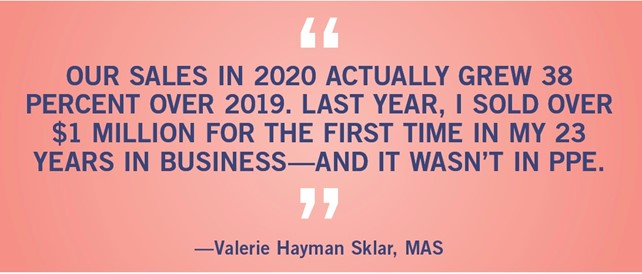
How do your sales in Q1 2021 compare with sales in Q1 2020?
Sales are up 30 percent over the same time in 2020.
What are the biggest issues or trends that are influencing your sales right now?
Companies are trying to engage with clients and employees and provide experiences, and we’re offering ways to enhance that. For example, we’ve provided drinkware for virtual happy hours, t-shirts for Mental Health Awareness Day, an onboarding box for new employees, and challenge coins and awards to motivate employees. We use fulfillment houses and also have some suppliers that can drop-ship. Being part of iPROMOTEu is also a great support.
In general terms, what are your revenue expectations for the company by year-end?
I’m not sure yet. Who knows if events are going to happen? I’m trying to be positive and listen to my clients, taking what they say and trying to make it work in the environment we’re in. One piece of advice: Don’t give up! Show clients and prospects that you are creative and that you can help them enhance whatever their challenges or marketing needs are with promotional products.
––––––––––––––––––––––––––––––––––––––––––––––––––––––––––––––––––––––––––
![]()

President and Owner
Campus Promotions, Inc.
London, Ontario
In broad terms, what has the past year been like for your company financially?
Our year end is May 31. Because we do so much work offshore, most of the orders booked in 2019 were delivered in early spring of 2020. Customers took their orders and paid their bills. Starting June 1, 2020 (our new fiscal year), we lost money every month and saw a decline in revenue of 39 percent.
What changes have been necessary in your company over the past 12 months?
When COVID hit, we had a decision to make. Were we going to sell PPE or stick to our 1,000-day plan of launching the “Crafty Can Cooler?” We decided not to sell PPE. Not selling PPE hurt profitability in the short term, however, it was the right long-term decision. We had time to perfect our line of patented can coolers, complete the intellectual property, develop the product line, do safety testing and get prepared for market. Those opportunities would not have presented themselves if we were hustling PPE instead of building this new brand. The game-changing decision was selling our office building at the end of the 2020. It cut our overhead, increased our cash flow, eliminated debt and bank lines, and made us flush with cash. I was lucky to have a building to sell to continue to pursue my dream.
What actions have you taken to restart sales for your business in the past few months?
We have pivoted to the golf market and pushed forward the launch date of the Coolertag™ (a combination bag tag and can cooler). We participated in our first PGA Show (virtual) and received over 500 unique requests for samples. We have a singular product focus for 2021, stocking a single SKU which can be custom-printed domestically. We continue to search for a channel distribution in the promotional, licensing and retail space. On campus, we continue to assist customers in implementing their graduations via a “convocation in a box,” which has replaced in-person ceremonies at most Canadian universities.
How do your sales in Q1 2021 compare with sales in Q1 2020?
They are up six percent for Q1, but down 39 percent in aggregate Q2, Q3 and Q4.
What are the biggest issues or trends that are influencing your sales right now?
The biggest issue we are facing is that our customers are in high-touch businesses (incompatible with social distancing). The hospitality industry is essentially event-driven, interactive, group-oriented and fun. This will not change in the short term, so we will have to deal with it. However, I am optimistic about numerous positive trends. Very few new promotional products have been developed during the COVID era and there is hunger for innovation. Markets like school fundraising will be looking for innovative ideas and opportunities to fund their programs. High school football and university programs will need to fundraise to make up the shortfall. Finally, opportunities are limitless to help connect disconnected customers. Customers still want to be engaged. There is an opportunity in every market. It requires effort, ingenuity and probably a touch of automation.
In general terms, what are your revenue expectations for the company by year-end?
We expect to get back to 2019 revenue levels. Going forward, we expect a two- or three-fold revenue increase in 2022 as we bring our new products to market.
––––––––––––––––––––––––––––––––––––––––––––––––––––––––––––––––––––––––––
![]()

CEO
Stumpies Marketing
Auburndale, Florida
In broad terms, what has the past year has been like for your company financially?
Sales were down at least 50 percent in 2020 over 2019. Most of my clients are sports teams, scout camps, schools and church camps. There was no minor league baseball last year, so no orders there, and the regular travel sports teams—soccer, baseball, basketball—had no activity, so I had no uniform sales. There were no tournaments for youth sports, so trophies and awards were non-existent. One of my niches is scout camps, and in Florida, there were only two scout camps open last summer and they didn’t need shirts or hats, water bottles or other logoed products for sale. Regular church camps that would buy shirts for the summer were closed. I also do giveaways at the games for the Florida Tropics [soccer team], but their whole season was cut short. I also didn’t have any school sales because it was done virtually. Companies stopped ordering because they were not doing trade shows or events.
What changes have been necessary in your company over the past 12 months?
We had to work to develop a new client base and new niche markets that wouldn’t be affected by the pandemic. I started cold calling on small and medium-sized businesses. I went to about 60 different businesses throughout the city and dropped off catalogs and products to show them what I could do. I got some business, but they were small orders—not enough to offset the normal orders. I also took our chamber of commerce member lists and called on every company—especially service companies like heating, air, roofing, lawn service and plumbing.
What actions have you taken to restart sales for your business in the past few months?
I’ve been following up on new markets from the cold calls and coming up with ways to help them market themselves. Part of it has been trying to figure out markets that will not be affected by COVID. Sports and school activities are starting to come back, but I’m not sure how the camps will go this summer, and sports are not yet back to the capacity they were.
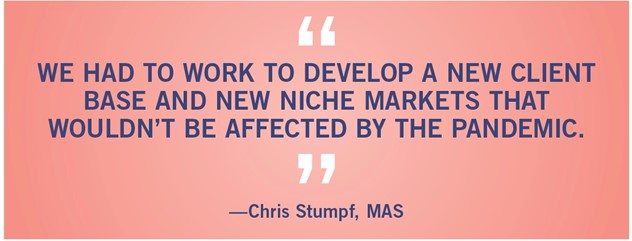
How do your sales in Q1 2021 compare with sales in Q1 2020?
Sales are up a little bit.
What are the biggest issues or trends that are influencing your sales right now?
Looks like events in the summer will come back. Travel, baseball and softball will happen, along with youth camps and church camps, so I’ll do shirts for them. They also order pop-up tents, giveaways and table skirts for outside events. We offer embroidery, screen printing in house, engraving, sandblasting, signs and banners, and printing of brochures and booklets. I’m also in the process of remodeling our 11,000-square-foot building to create a 3,000-square-foot showroom that will have about 1,500 pieces of apparel on racks and displays of products from 45 or 50 suppliers for customers to look through. I’m also planning to do lunch-and-learns for Realtors, financial planners, insurance agents and others so they can get ideas for specific types of clients. I’ll also have a full production facility with rooms for embroidery, screen printing, signs and banners, trophies and awards and flat printing.
In general terms, what are your revenue expectations for the company by year-end?
I’m expecting maybe 75 percent of 2019 sales. It’s a whole new customer base so I don’t know how to project. I’m still working on finding new customers.
––––––––––––––––––––––––––––––––––––––––––––––––––––––––––––––––––––––––––

![]()

President
Flywheel Brands
Hixson, Tennessee
In broad terms, what has the past year been like for your company financially?
Blessed. We pivoted quickly and had our best year ever amidst the hardest and most trying times we have ever experienced. Like a lot of our peers in the industry, Flywheel pivoted to selling PPE. We also created a school desk partition that was our saving grace during this pandemic.
What changes have been necessary for your company over the past 12 months?
We had to get really good, really quickly at learning new products, supply chains and technology. The details surrounding PPE items changed rapidly, and we had to remain flexible in order to appropriately adapt to best serve our clients. We also implemented a new lead generation program and made improvements to our CRM and order-processing system.
What actions have you taken to restart sales for your business in the past few months?
We’ve been investing heavily into our tech infrastructure and have retooled our entire sales process.
How do your sales in Q1 2021 compare with sales in Q1 2020?
We finished the quarter up 28 percent over 2020. We see things shifting back to more “normal” the deeper into the year we go.
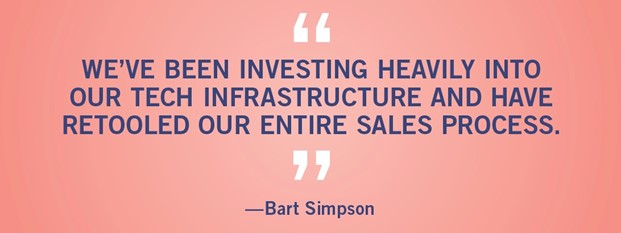
What are the biggest issues or trends that are influencing your sales right now?
The demand for e-stores and drop shipping remains strong. We see a lack of inventory with suppliers and the increased cost of products and shipping as potential issues. We also see the challenge of maintaining a positive mindset and remaining upbeat as something to focus on with our teams.
In general terms, what are your revenue expectations for the company by year-end?
I have high expectations of repeating or improving upon our growth last year and ending equal to or greater than our 2020 sales that were up more than 40 percent over 2019.
––––––––––––––––––––––––––––––––––––––––––––––––––––––––––––––––––––––––––
![]()

President and CEO
Stran Promotional Solutions
Quincy, Massachusetts
In broad terms, what has the past year has been like for your company financially?
Stran had a strong 2020 overall and revenue increased by more than 25 percent year-over-year. We attribute our success in 2020 to several factors. First, was the extensive project that Stran executed for the U.S. Census [see the case study on p. 28] which was well under way before the pandemic hit and continued throughout the pandemic. Second, was an early pivot to PPE sales that resulted in incremental revenue that replaced some of our traditional program sales that were down due to the effects of COVID-19. Finally, our acquisition of Wildman Imprints in Q4 2020 has added significant revenue and continues to generate new opportunities in new geographies and verticals.
What changes have been necessary in your company over the past 12 months?
We have responded to the challenges of the past year by developing a company-wide strategy and sticking to our hardworking culture and core value of delivering creative merchandise solutions that effectively promote brands. We continue to focus on our core group of customers while providing additional value-added services, offering new technology solutions that drive efficiencies and proposing alternative product offerings based on each client’s unique needs. We also continue to solicit and market ourselves to long-term prospects that have shown interest in Stran. We have remained committed to being a customer-focused, solutions-oriented company that provides our customers with a comprehensive offering that is more than just products alone. Below are some of the specific ways we have responded to over the past year.
- Adhered to all state and federal social distancing requirements while prioritizing health and safety for our employees. We allowed team members to work remotely, allowing us to continue providing uninterrupted sales and service to our customers throughout the year.
- Emphasized and established cost-savings initiatives, cost control processes and cash conservation to preserve liquidity.
- Explored acquisition opportunities and executed the acquisition of Wildman Imprints with historical revenue exceeding $10 million annually.
- Retained key customers through constant communication, making proactive product or program suggestions, driving program efficiencies and delivering value-added solutions to help them market themselves more effectively.
- Concentrated and succeeded in earning business from clients in specific verticals that have spent more during the pandemic (health care, digital entertainment, beverage, cannabis and consumer packaged goods)
- Retained key employees by continuing to provide them with competitive compensation and the tools required to be successful in their jobs
- Refocused our marketing activities on more client-specific, revenue-generating activities that reduce spend while remaining effective.
We are proud of the resilience and hard work that everyone at Stran has put forth over the past year. We have remained consistent with our cultural values that support the long-term health of our business. We have an outstanding reputation, over 26 years of success, and are very well positioned to capitalize on the opportunities that will arise from a recovering economy.
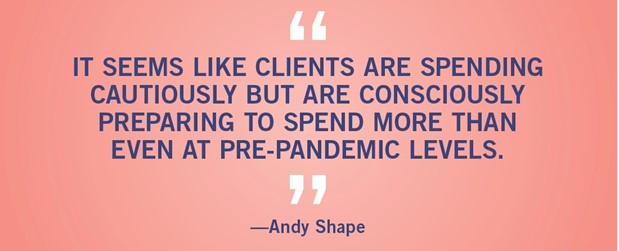
What actions have you taken to restart sales for your business in the past few months?
We have been focused both on re-engaging with our current client base while also uncovering new opportunities. We have also worked on adding new services and other value-added offerings to our portfolio that help our clients deliver even more effective results at a lower cost.
How do your sales in Q1 2021 compare with sales in Q1 2020?
Our Q1 sales in 2021 were down roughly 19 percent over Q1 2020. Factors including businesses not being fully opened, a lack of in-person events and decreased marketing budgets have led to decreased demand for our products and services in Q1 this year compared to last year. Although we have been able to capitalize on the demand for PPE, sales of those have slowed significantly, as there’s less demand for PPE.
What are the biggest issues or trends that are influencing your sales right now?
The biggest factors at the moment are that PPE sales have slowed down (or are at least at a trickle right now) and while we have seen lots of activity for our traditional offerings through RFPs, pricing initiatives and proposals, those activities have not necessarily resulted in immediate revenue generation. It seems like clients are spending cautiously but are consciously preparing to spend more than even at pre-pandemic levels. Events are being planned but are still a ways out and uncertain. Retail is coming back, but they are being cautious. And in many cases, people are still working from home so face-to-face meetings with clients, prospects or partners are still virtual.
In general terms, what are your revenue expectations for the company by year-end?
Although revenue is down in the first quarter of 2021 compared to 2020, we have seen encouraging signs of recovery. There has been a significant increase in the amount of RFP requests and other customer inquiries, which leads us to believe that companies are starting to prepare to spend at previous or increased levels. We are expecting Q1 and Q2 to remain somewhat flat but expect that in Q3 and certainly in Q4 there will be a lot of pent-up demand that should compensate for potentially slower earlier numbers.
––––––––––––––––––––––––––––––––––––––––––––––––––––––––––––––––––––––––––
![]()
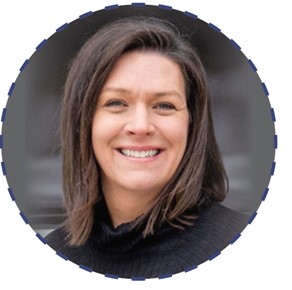 CEO
CEO
AIA Corporation
Appleton, Wisconsin
In broad terms, what has the past year been like for your company financially?
It’s been an interesting year with unique challenges and opportunities. The drastic change in product mix drove companies—AIA included—to adapt balance sheet, cash flow management and income statement performance. At AIA, we were well-positioned to mitigate the drop in traditional promotional product sales through alternative revenue streams such as PPE.
What changes have been necessary in your company over the past 12 months?
It was and is critical for businesses to adapt to the financial and operational challenges of the past year, but also to respond to rapidly changing humanitarian issues. The pandemic and social unrest created circumstances that were isolating and stressful for many within our company’s reach. For AIA, this led us to be intentional about creating a strategic plan for 2021 that supports a reimagined owner experience. We invested in attracting and retaining industry talent and reorganized our team to support increased proactive outreach, relevant educational content (such as Ask the Expert), peer networking (Partners in Promo, for example) and internal virtual social activities. We’ve also worked on strengthening relationships with our suppliers, owner community and the industry at large. I’m proud of how everyone at AIA stayed focused on elevating and servicing our communities for growth, applying our collective passion and individual expertise.
What actions have you taken to restart sales for your business in the past few months?
AIA is focused on providing relevant content and sales support to our owner community in a way that is specific to each unique business. Through our peer network, we’ve leveraged a tremendous amount of best practice sharing between our industry talent and partners. While we’re seeing sales increase, we know we need to be agile in response to what we expect will be an uncertain and potentially uneven economic recovery.
How do your sales in Q1 2021 compare with sales in Q1 2020?
Although we ended 2020 with a remarkable recovery in sales, the start of 2021 was slow. In March and April, we saw much more order activity and we are optimistic on the outlook for the remainder of the year.
What are the biggest issues or trends that are influencing your sales right now?
The biggest challenge is the unpredictability of this economic recovery. Just as we responded to various phases of the pandemic, we need to be agile in how we manage the phases and “K-shape” impact of economic recovery, which will affect each industry differently. Given the broad-based relevance of the promotional products industry to all other industries, we are affected by regional, national and global recovery patterns, and expect to continue to be impacted by continued disruptions in sourcing, supply chain, logistics and pricing.
In general terms, what are your revenue expectations for the company by year-end?
At AIA, we believe that each challenge we encounter is an opportunity in disguise. With our uniquely creative, agile and ambitious owner community, I am confident that we will continue to strengthen our competitive position.
––––––––––––––––––––––––––––––––––––––––––––––––––––––––––––––––––––––––––
![]()

CEO
Zagwear
Orangeburg, New York
In broad terms, what has the past year has been like for your company financially?
In broad terms, I would say it’s been challenging and enlightening. It’s forced us to take a hard look at all parts of the business; some that we had not studied as closely prior to the pandemic. The silver lining is that I am much more in-tune with the finances of the business now and working more closely with what we need to do to thrive. As many companies did, we applied and received a PPP loan, and we also sold a tremendous amount of PPE. That was a very welcome revenue stream that we did not expect when all of this initially broke back in February 2020. So, we had a better year than expected but are cautiously optimistic because the PPP money is no longer available, and the PPE demand has slowed—it’s just a matter of how quickly our clients return to spending as they once did. As when the pandemic initially unfolded, there are still many unknowns distributors are facing; around timing, normalcy, revenue and spend.
What changes have been necessary in your company over the past 12 months?
I lead with technology both in-house and in the way we work with our clients. We’ve developed tools that have been extremely valuable to our clients and have helped us from a revenue perspective. We pushed our technology development forward, knowing clients would be looking for efficiencies and ways to tackle the new challenges of a remote workforce. We’ve also changed how we go to market to be aligned with the current needs of our customers today, not a year ago. Their needs have changed quickly and we have always operated like a speedboat rather than a cruise ship. This has helped us react in real time to support the challenges brought on over the last year.
What actions have you taken to restart sales for your business in the past few months?
We have been having more business development meetings to share wins and talk through challenges. We are also having conversations with clients—really connecting with them. We are learning more about their business so we can insert ourselves in areas of value. We are a very broad-based business and have so much to offer. In addition to the U.S., we have offices in Europe and the UK; we are providing a full array of services in all regions to support our largest clients. In addition to product sourcing, print services, logistics, fulfillment and creative, we are now helping our clients reduce their carbon footprint as well as providing enhanced data security of personal information. Our technology and logistics experience has been extremely valuable over the last 12 months. Many of our clients in industries such as CPG, beverage and technology have done very well during the pandemic and that has translated into opportunities for us.
How do your sales in Q1 2021 compare with sales in Q1 2020?
Our first quarter of this year was not quite as strong as it was in 2020 although we met expectations. We are seeing activity increase through the beginning of Q2.
What are the biggest issues or trends that are influencing your sales right now?
We are still seeing a variety of issues as we work our way through the COVID pandemic. For example, one of our largest clients has had moratorium on swag spend since March 2020 and it probably won’t end until September. So much of it is out of our control. Secondly, and more important, the supply chain issues facing us all are at an all-time high. Whether it’s stock issues with vendors, increased prices of goods, shipping delays, etc., we are having to spend more time and energy on every transaction. It seems these challenges may take most of 2021 before we start seeing real improvements. Lastly, a lot of the efforts will not result in business right away. Most companies are still on the sidelines as they figure what their new normal will look like. Events, travel and hospitality events will hopefully begin happening in Q3 which should help drive new business efforts. So, currently, there’s a lot of communication, coordination, presentations and demos but companies may not be ready to spend just yet.
In general terms, what are your revenue expectations for the company by year-end?
We were up in 2020 due to PPE, so my goal would be to match it. That would require a strong second half of the year and we are seeing activity and sales increase; so I feel it’s doable.
2020 was such an anomaly that you can’t use it as a benchmark. I feel the industry right now has some headwinds that will continue for the next two to three months [so we’re] keeping a very close eye on overhead, all of our expenses, and how we can go to market as efficiently as possible.
––––––––––––––––––––––––––––––––––––––––––––––––––––––––––––––––––––––––––
Tina Berres Filipski is editor of PPB.

